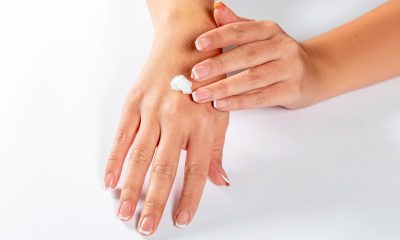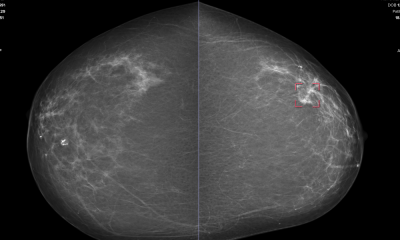Over 80% of the world lacks adequate healthcare infrastructure. Access to radiographic imaging is especially problematic, as more than half of all medical procedures require radiological diagnostics. Fortunately, OXOS Medical has viewed this as an opportunity for innovation, and they’ve recently begun to explore an exciting solution.
OXOS has developed a low-radiation, dynamic, handheld x-ray imaging system. Last year, their first system received FDA clearance, and OXOS is working to bring a new, general-purpose device to the market later this year. These handheld radiation systems promise to open up many opportunities for improving healthcare services throughout the United States and globally.
The Impact of Telehealth on Radiology
Telehealth uses electronic information and telecommunication technologies to support long-distance, remote clinical healthcare, patient and professional health-related education, public health, and health administration.
Radiology services are a critical link for most diagnoses and procedures in the care chain. There is no viable solution to delivering these services in a remote telehealth setting. Traditionally, radiology services require a lead-lined room. For this reason, x-ray imaging is not available in many places. Where it is accessible, the set-up cost is very high, requiring, on average, a million dollars in investment.
Traditional radiography machines are immobile, room-scale devices. With OXOS’ new technology, providers can move to various locations, opening up opportunities within telehealth and radiology. Telehealth solutions also ensure greater efficiency in healthcare delivery, resulting in improved outcomes in different healthcare services, including radiology.
Portable diagnostic tools like the ones produced by OXOS have the potential to open the door to a type of care that is portable and reaches those who need it the most. With OXOS’ new handheld radiation system, mobile radiology can reach individuals who previously would not have quick and efficient access to radiology services. Additionally, mobile radiology becomes usable in sports, rural, military, and other settings.
Lastly, incumbent systems have a high learning curve and are typically only operable by highly-trained professionals, of whom there is a shortage. OXOS’ suite of smarts makes it intuitive for any lightly-trained individual to understand how the system works, making it possible for them to operate it in a point-and-shoot manner.
The World’s First AI-Automated Dynamic Radiation Dose Engine
OXOS has produced the first dynamic, handheld, low radiation x-ray diagnostic tool. The Micro C received two FDA clearances In 2021, covering clinical, surgical, and pediatric indications. In February 2022, OXOS received an FDA 510(k) clearance for the company’s groundbreaking AiLARA system.
AiLARA is the world’s first AI-automated, dynamic radiation dose engine. AiLARA enables clinicians to operate Micro C in a point-and-shoot capacity and produce a diagnostically-relevant image using the least amount of radiation, automatically determined by the FDA-cleared machine learning algorithm. OXOS’ patented positioning system and sensor array determine the anatomy’s thickness and the distance between the x-ray source, subject, and detector. This system makes it possible to achieve better image quality with far fewer reshoots than any other product. By automatically determining these parameters, OXOS enables lightly-trained healthcare providers to deliver radiographic diagnostics anywhere.
Mobile Radiology and Medically Underserved Populations
Geographical, sociocultural, and economic constraints limit patients’ access to medical facilities. OXOS’s portfolio of radiographic diagnostic instruments is impactful not just in the United States but on a broader scale as nearly two-thirds of the world’s population does not have access to medical imaging. Remote diagnostic tools will play a significant part in closing the accessibility gap to life-changing care nationwide and globally.
According to Evan Ruff of OXOS Medical: “We want anyone, anywhere, to be able to access radiological diagnostics at the point of care. This technology will further enable shifts towards decentralized healthcare, and is important for patients who live in ‘health deserts’ throughout the United States and the World.”
Accessible radiographic diagnostics is essential for the eighty percent of patients who lack adequate access to healthcare. Further benefits to mobile radiology include flexibility for health practitioners and patients to arrange visits outside of traditional clinic hours.
The Advent of Telehealth Services
The recent Pandemic has caused unprecedented challenges in the delivery of healthcare services globally. A collective pivot towards telehealth has been crucial for high-risk patients unable to leave their homes.
Electronic technology such as telehealth services promises to bridge the gap in healthcare opportunities across all facets of medicine, but maybe none so critical as radiology. Providers have broadly used telemedicine to provide basic health care and monitoring to remote areas and underserved patients. Before OXOS, image quality and radiation concerns proved to be insurmountable challenges to delivering reliable radiographic telehealth services. Now, the pandemic has forced many more specialists, like radiologists, to rethink telehealth technology, maintain continuity of care, reduce time spent in healthcare facilities, and possibly expand the scope of practice.
A Bright Future for Remote Radiology
OXOS is at the forefront of radiographic telehealth technology. In the recent past, there were concerns about the cross-compatibility of technology and the complex regulation of telehealth services; however, with the FDA approval of OXOS’ mobile radiology products, it is apparent that these innovations could fill many gaps in healthcare.















